Complete Solutions to COMPETITION FOCUS JEE (MAIN AND ADVANCED)/MEDICAL ENTRANCES SPECIAL (MULTIPLE CHOICE QUESTIONS WITH ONE CORRECT ANSWER-I) of chapter ALCOHOLS, PHENOLS AND ETHERS of Class 12 book with complete answers and questions
| Class 12 | CHEMISTRY |
| Chapter | ALCOHOLS, PHENOLS AND ETHERS |
| PRADEEP | COMPETITION FOCUS JEE (MAIN AND ADVANCED)/MEDICAL ENTRANCES SPECIAL (MULTIPLE CHOICE QUESTIONS WITH ONE CORRECT ANSWER-I) |
| Number Of Questions | 97 |
| Academic Year | 2023-24 |
Acid catalysed hydration of alkene is an example for
01:18View SolutionIn the following reaction:
`H_(3)C-underset(CH_(3))underset(|)overset(CH_(3))overset(|)(C )-CH=CH_(2)overset(H_(2)O //H6(+))(rarr)underset("product")underset("Major")(A)+underset("Product")underset("Minor")(B)`
The major product is03:21View SolutionAmong the alkenes, which one produces tertiary butyl alcohol on acid hydration?
03:27View SolutionWhat is Z in the following sequence of reactions?
`Z overset(PCl_(3))toX overset(alc.KOH)to Y underset((ii)H_(2)O boil)overset((i)Conc.H_(2)SO_(4))toZ`04:09View SolutionIdentify (Z) in the following reaction series `:`
Ethanol `overset(PCl_(5))(rarr)(X)overset("Alc. KOH")(rarr)(Y) underset(H_(2)O,"heat") overset(H_(2)SO_(4),"r o om temp.)(rarr)(Z)`02:43View SolutionThe product of acid catalyzed hydration of `2-`pheny`1`propene is
01:29View SolutionWhat is the order of reactivity of these alkenes
`(CH_(3))_(2)C=CH_(2)(I), CH_(3)CH=CH_(2)(II) and `CH_(2)=CH_(2)(III)` when subject to acid - catalysed hydration?02:04View SolutionAcid catalysed hydration of alkenes except ethene leads to the formation of
04:29View SolutionPropene on hydroboration and oxidation produces
02:03View Solution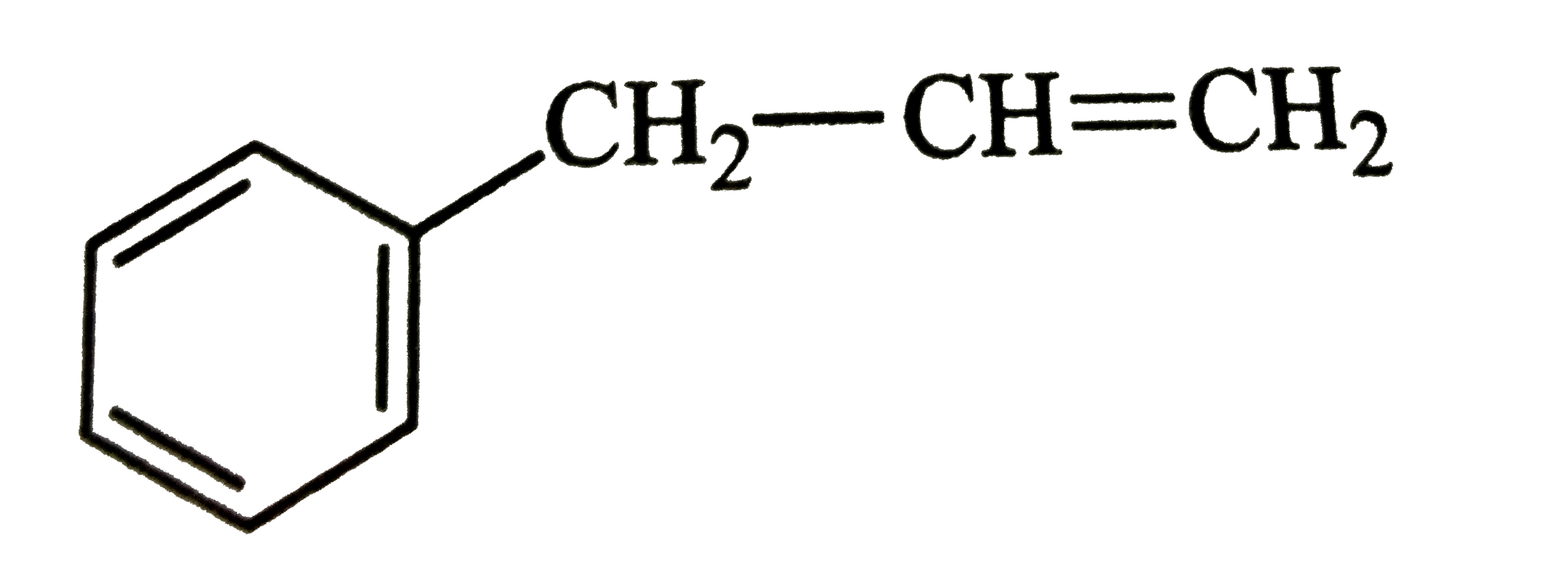
On mercuration-demercuration produces02:51View SolutionWhich of the estes shown, after reduction with `LiAlH_(4)` and aqueous workup, will yield two molecules of only a single alcohol ?
03:28View SolutionReagent(s) which can be used to bring the following transformation is (are):
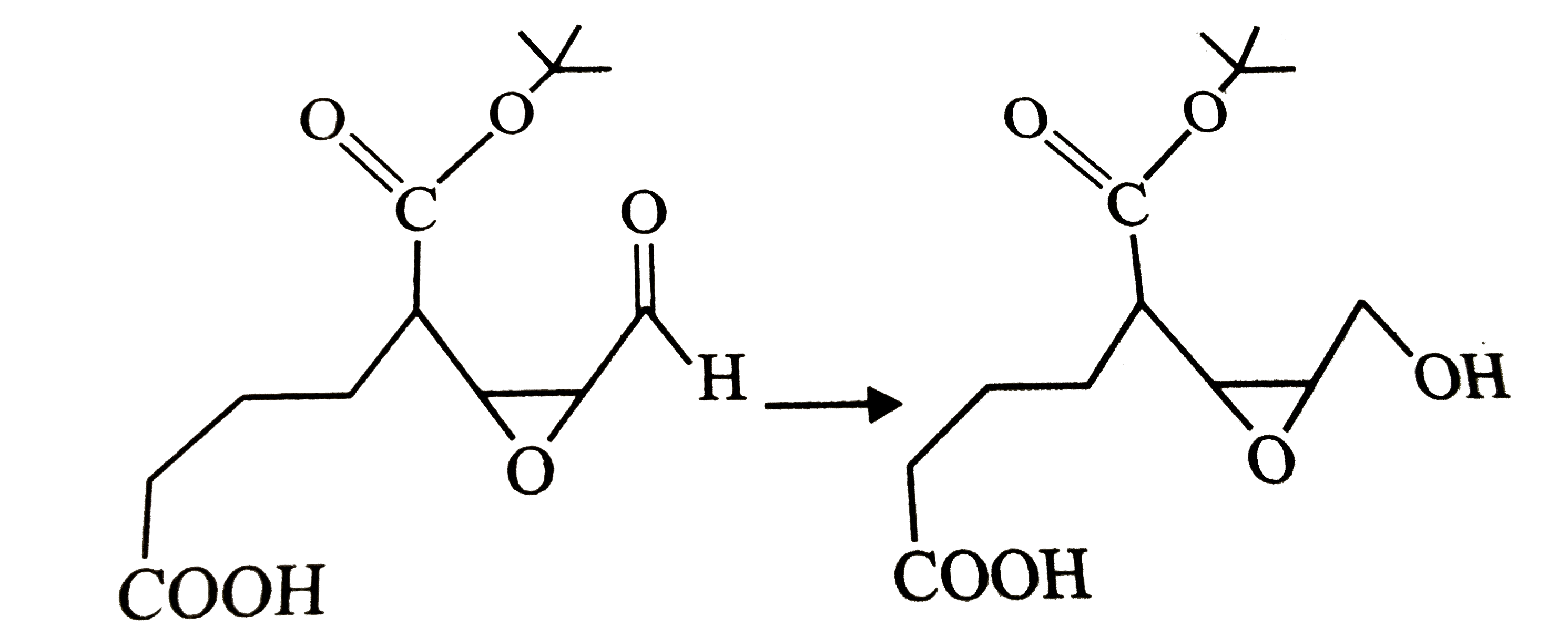 02:46View Solution
02:46View SolutionIn the following sequence of reaction
`CH_(3)-Br overset(KCN)rarrA overset(H_(3)O+)rarrBunderset(Ether)overset(LiAIH_(4))rarrC`
the end product is .02:16View SolutionIn the reaction
`CH_(3)CO OH overset(LiAlH_(4))toA overset(PCl_(5))toB overset(Alc. KOH)toC`
The product C is04:20View SolutionWhich of the following Grignard reagents is suitable for the preparation of 3-methyl -2-butanol ?
07:18View Solution
the IUPAC name of 'B' is02:44View Solution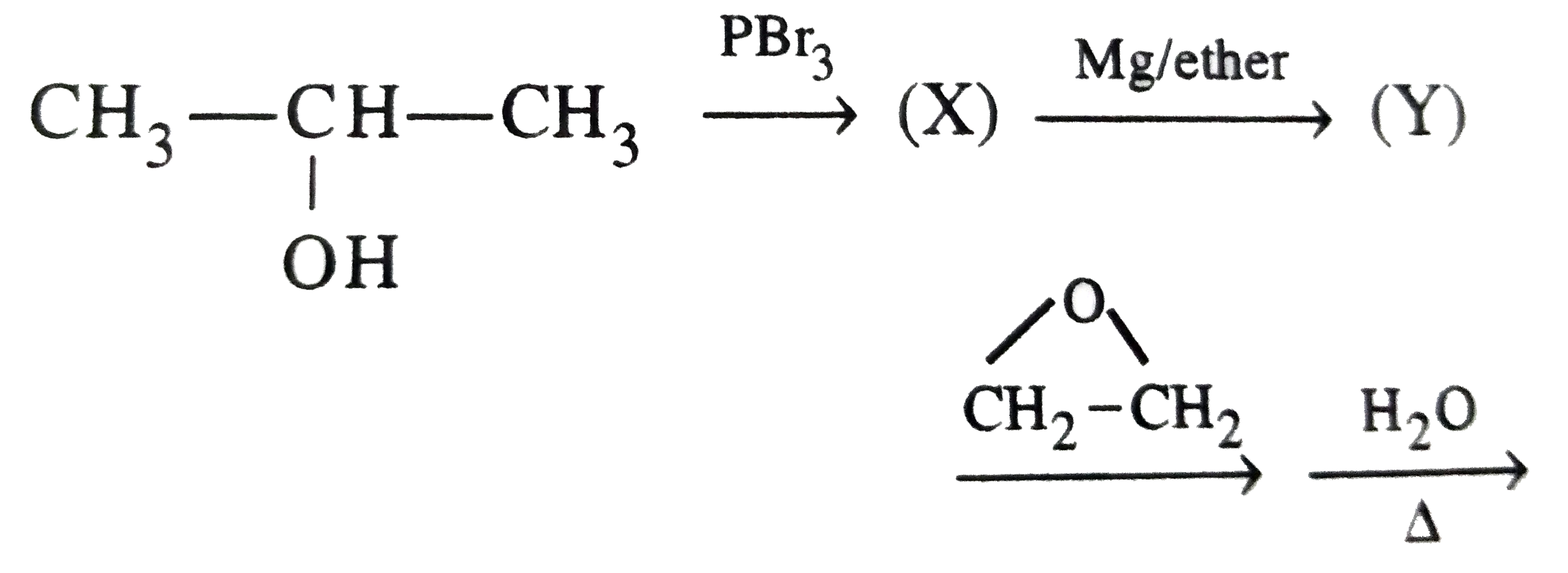
The final products is02:32View SolutionEthyl ester`underset("excess")overset(CH_(3)MgBr)toP`. The product P is
02:25View SolutionWhich among the following compounds will give a secondary alcohol on reacting with Grignard reagent followed by acid hydrolysis?
I. `HCHO`
II. `C_(2)H_(5)CHO`
III. `CH_(3)COCH_(3)`
IV. `C_(2)H_(5)COOH`
Select the correct answer using the codes given below.03:03View SolutionAmong the following compounds, the strongest acid is :
02:23View SolutionFor which of the following significant `mu ne 0`?
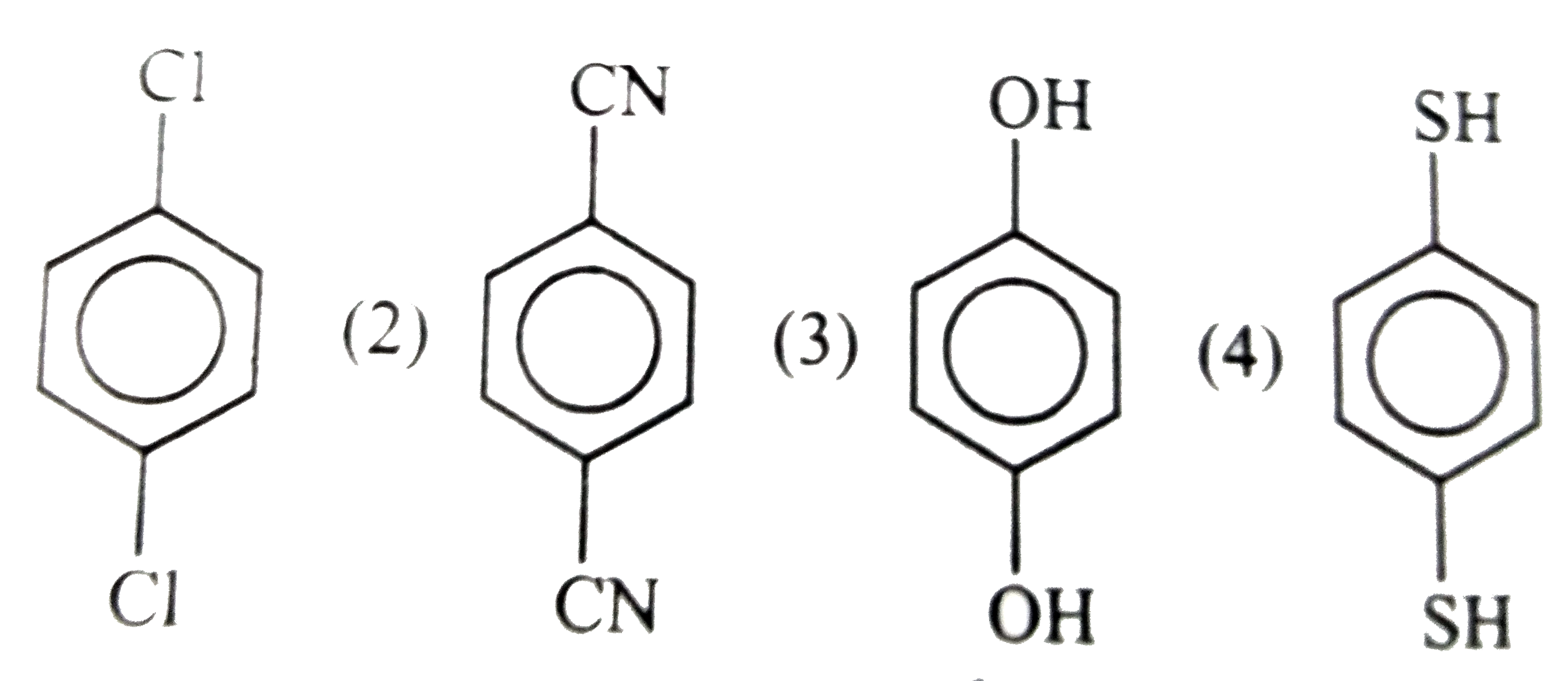 02:10View Solution
02:10View SolutionWhich of the following has maximum `pK_(a)` value?
02:01View SolutionThe correct order of basic strength is
02:15View SolutionAmong the following, the non-spontaneous reaction is
02:04View SolutionPhenyl magnesium bromide reacts with methanol to give :-
03:01View Solution3750 mg of an alcohool reacts with required amount of methyl magnesium bromide and release 140mL of methane gas at STP. The alcohol is `:`
03:34View SolutionCyclohexene is best prepared from cyclohexanol by which of the following
02:56View SolutionDuring dehydration of alcohols to alkenes by heating with conc. `H_(2)SO_(4)`, initial step is
02:27View SolutionThe product of the following reactions is
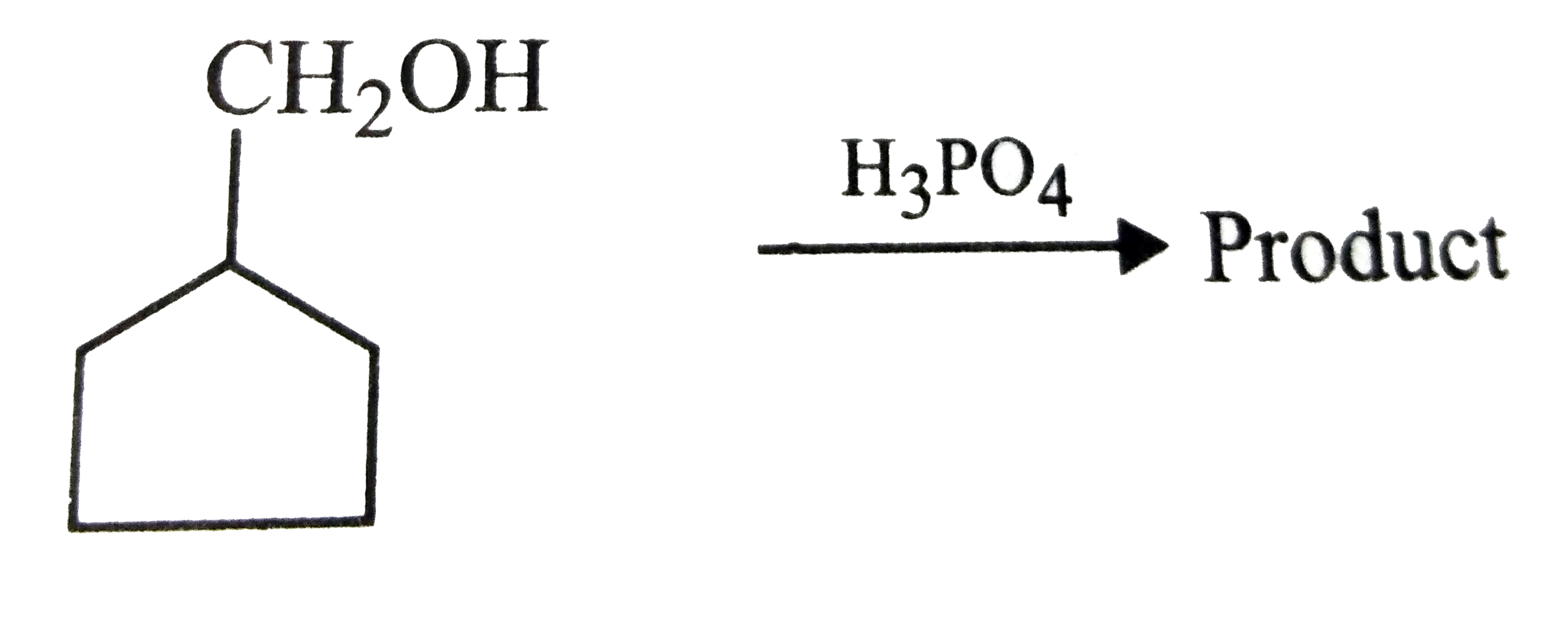 01:50View Solution
01:50View SolutionThe order of reactivity of the following alcohols

towards conc. HCl is02:26View Solution
How many structures of F is possible?01:57View SolutionThe main product of the following reaction is
`C_(6)H_(5)CH_(2)CH(OH)CH(CH_(3))_(2)overset("conc."H_(2)SO_(4))rarr`?05:51View SolutionFind the product of the given reaction?
 02:07View Solution
02:07View SolutionIn the following reactions,
(a) `H_(3)C-overset(CH_(3))overset("| ")(CH)-underset(" "OH )underset(|)(CH)-CH_(3)overset(H^(+)//heat)rarr underset("product")underset("Major")(A) + underset("product")underset("Minor")(B)`
(b) `A overset(HBr,dark)underset("in absence of peroxide")rarr underset("product")underset("Major")(C)+underset("product")underset("Minor")(D)`
The major products (A) and (C) are respectively:04:49View Solution`CH_(3)CH_(2)-underset(CH_(3))underset(|)overset(CH_(3))overset(|)(C)-underset(OH)underset(|)(C)H-CH_(3) underset(heat)overset(H_(2)SO_(4))tounderset("Major")P`
What is the major product P in the above reactions?02:29View SolutionWhich of the following is not the product of dehydration of
 01:53View Solution
01:53View SolutionThe most suitable reagent for the conversion of `R-CH_(2)OH to R-CHO` is
01:40View SolutionWhich of the following compounds can be used as antifreeze in automobile radiators?
01:16View SolutionThe red coloured compound formed during
Victor-Meyer's test for ethanol is01:54View SolutionAn organic compound (A) reacts with methyl magnesium iodide to form an addition product which on hydrolysis forms the compound (B). Compound (B) gives blue colour salt in Victor Meyer's test.The compounds (A) and (B) are respectively `:`
05:41View SolutionCompound 'A' of molecula formula `C_(4)H_(10)O` on treatment with Lucas reagent at room temperature gives compound 'B'. When compound 'B' is heated with alcoholic KOH, it gives isobutene. Compound 'A' annd 'B' are respectively
03:18View SolutionFrom amongest the following alcohols, the one that would react fastest with conc. HCl and anhydrous `ZnCl_(2)` is
04:35View SolutionAn unknown alcohol is treated with the ''Lucas reagent'' to determine whether the alcohol is primary, secondary or tertiary. Which alcohol reacts fastest and by what mechanism?
02:50View SolutionWhich of the following compound would not react with Lucas reagent at room temperature?
02:41View SolutionIodoform can be prepared from all except :
03:40View SolutionFollowing compounds are given
(i) `CH_(3)CH_(2)OH`
(ii) `CH_(3)COCH_(3)`
(iii) `CH_(3)-underset(CH_(3))underset(|)(C)HOH`
(iv) `CH_(3)OH`01:40View SolutionAn organic compound X on treatment with pyridinium chlorochromate in dichloromethane gives compound Y. compound Y reaccts with `I_(2)` and alkali to form triiodomethane. The compound 'X' is
01:52View SolutionHaloform reaction does not take place with
01:44View SolutionThe major product U in the following reactions is
 01:51View Solution
01:51View SolutionOn commercial scale, phenol is obtained from chlorobenzene by raschig's process. Which one of the following is Raschig's process?
00:58View SolutionThe conversion of m-nitrophenol to resorcinol inivolves respectively`:`
02:14View SolutionWhich of the following compounds is most acidic?
03:31View SolutionThe correct order of decreasing acidity of nitrophenols will be
03:47View SolutionThe correct order of acid strength of the following substituted phenols in water at `28^(@)C` is
02:45View SolutionArrange the following compounds is order of decreasing acidity.
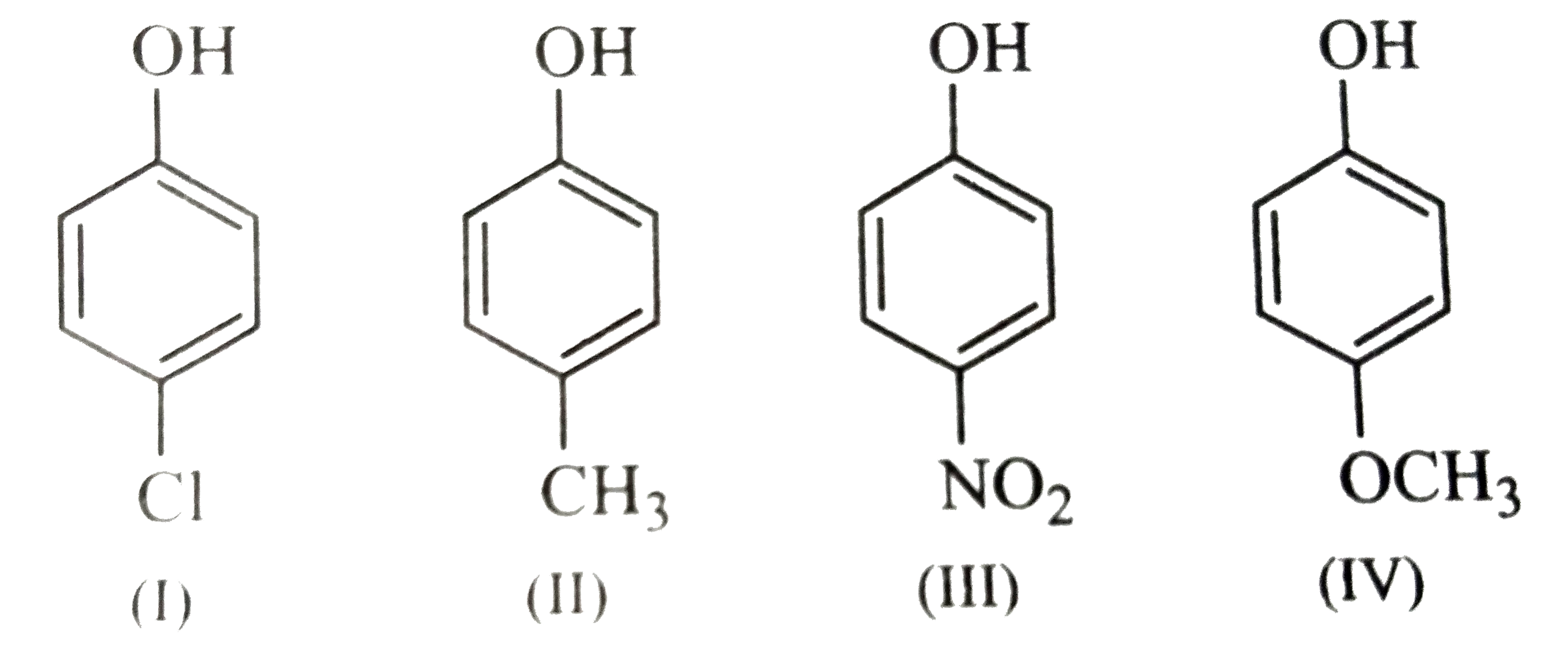 01:46View Solution
01:46View Solutionamong the following four compounds
(i) phenol (ii) methylphenol
(iii) meta - nitrophenol (iv) para - nitrophenol
the acidity order is:05:46View SolutionArrange the following compounds in increasing order of their acidic strength:
(i) m-nitrophenol (ii) m-cresol
(iii) phenol (iv) m-chlorophenol04:12View SolutionStrongest acid amon the following is
01:45View SolutionGiven are cyclohexanol `(I)`, acetic acid `(II),2,4,6-`trinitrophenol `(III)` and phenol `(IV)`. In these the order of decreasing acidic character will be:
03:10View SolutionWhich of the following will not be soluble in sodium bicarbonate?
02:58View Solution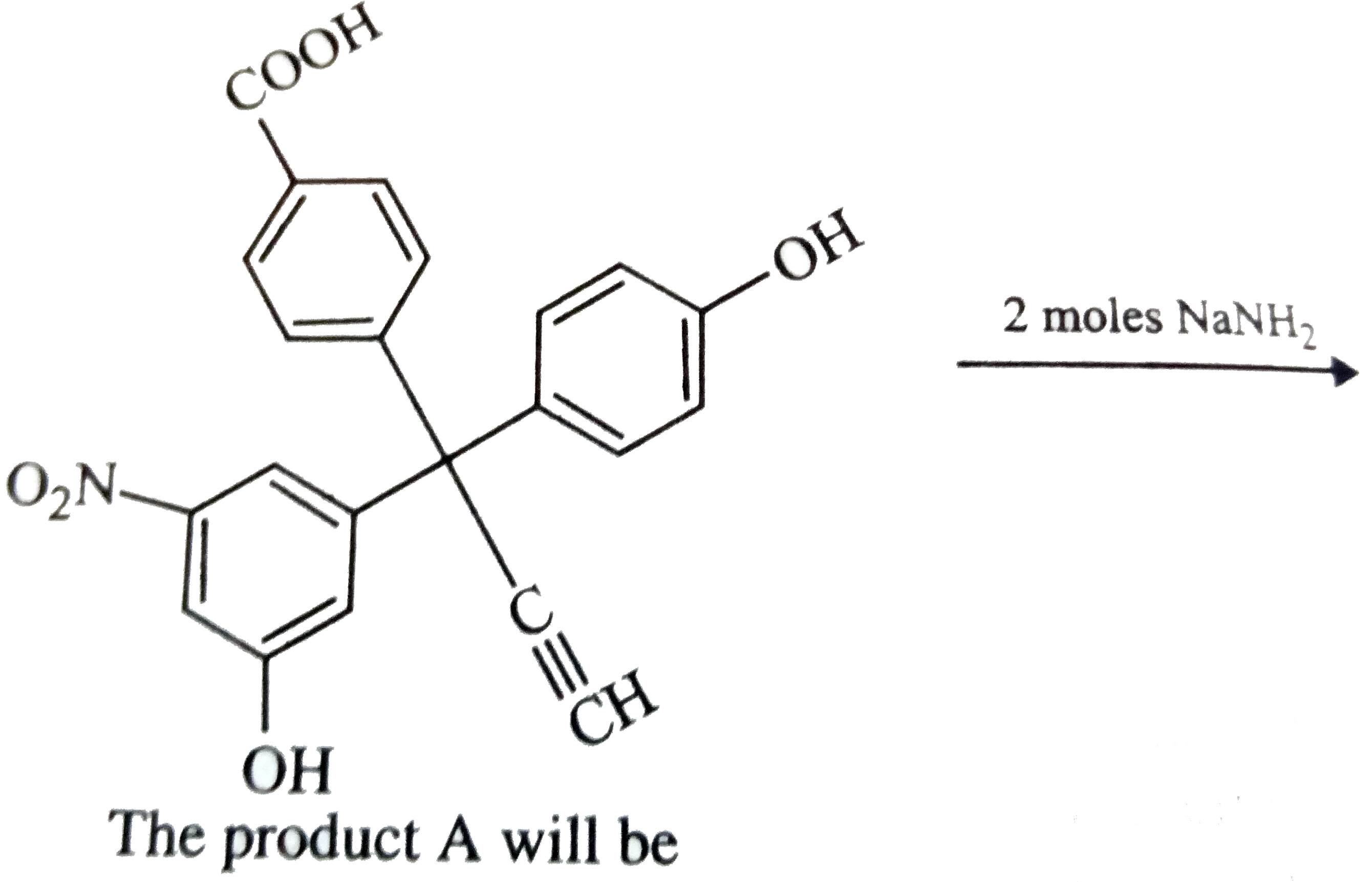
The product A will be04:39View SolutionOrtho-nitrophenol is less soluble in water than p- and m-nitrophenols because
02:20View SolutionThe stability towards dehydration of the following compound
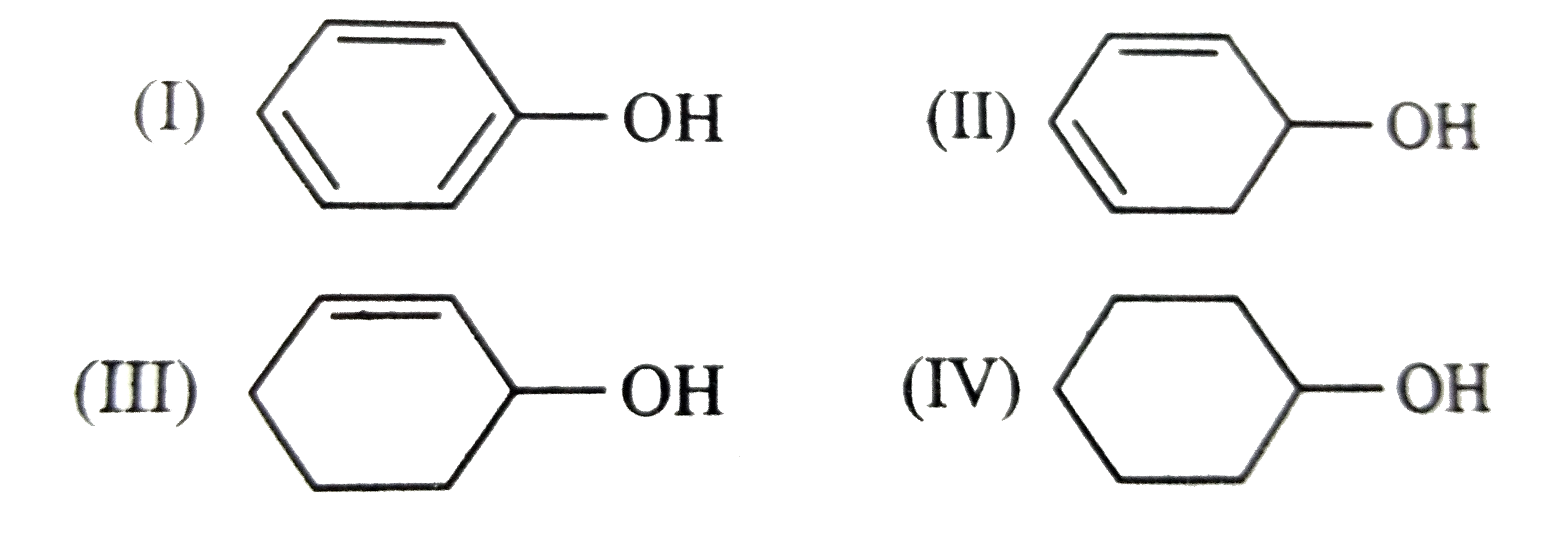
decreases in the order02:43View SolutionWhich one is the most reactive towards electrophilic reagent?
03:23View SolutionWhen phenol is treated with `D_(2)SO_(4)//D_(2)O`, some of the hydrogens get exchanged. The final product in the exchange reaction is
03:36View SolutionThe structure of the compound that gives a tribromo derivative on treatment with bromine water is:
10:25View SolutionThe reaction of

will HBr gives01:47View SolutionPhenol, when it first reacts with concentrated sulphuric acid and then with concentrated nitric acid, gives
01:35View SolutionThe major product obtained on interaction of phenol with sodium hydroxide and carbon dioxide is :
04:13View SolutionSodium phenoxide when heated with `CO_(2)` under pressure at `125^(@) C` yield a product which on acetylation gives product `C`
 04:27View Solution
04:27View SolutionTwo aromatic compounds having formula `C_(7)H_(8) O` which are easily identified by `FeCl_(3)` solution test (violet colouration ) are `,`
04:14View SolutionWhich of the following reagents may be used to distinguish between phenol and beznoic acid ?
01:02View SolutionReaction of phenol with chloroform in presence of dilute sodium hydroxide finally introduces which one of the following functional group?
02:01View SolutionIdentify the product A in the given reaction,
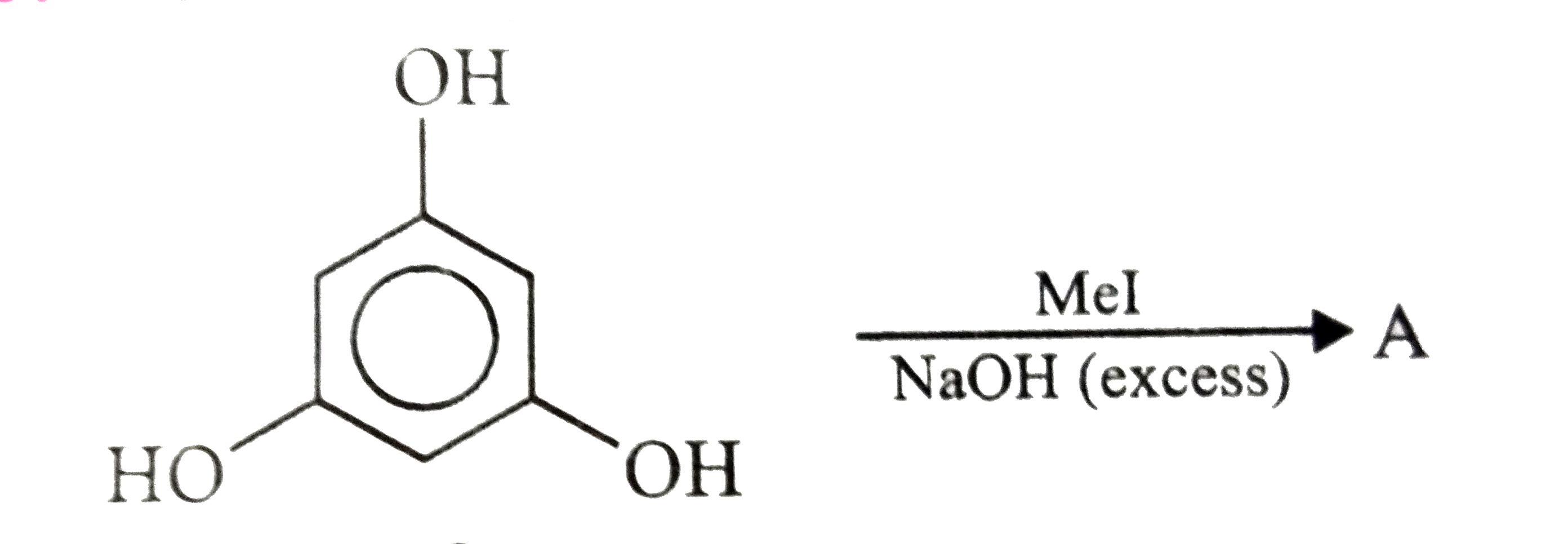 01:31View Solution
01:31View SolutionThe molecular formula of ethers is
00:25View SolutionThe reaction
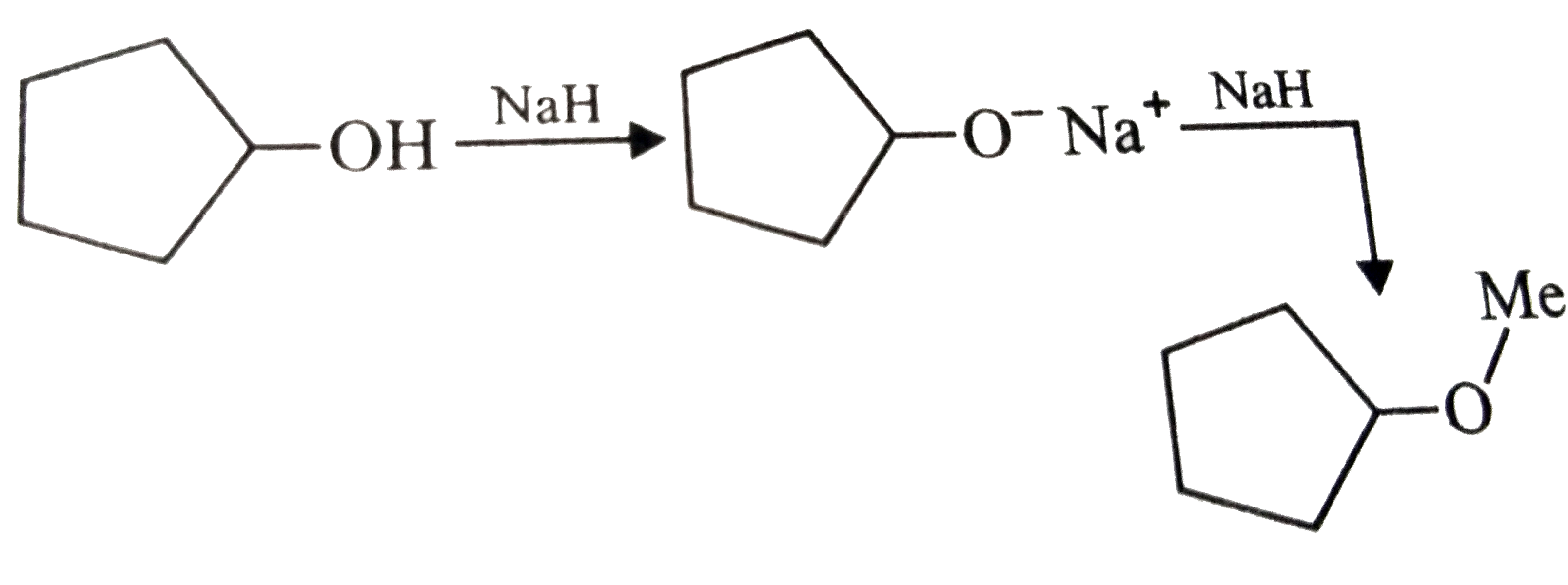
can be classified as01:41View SolutionThe reaction
`CH_(3)-underset(CH_(3))underset(|)overset(CH_(3))overset(|)(C )-ONa+CH_(3)CH_(2)ClrarrCH_(3)-underset(CH_(3))underset(|)overset(CH_(3))overset(|)(C )-O-CH_(2)-CH_(3)`
is called02:36View SolutionIn Williamson's synthesis, ethoxyethane is pprepared by
02:25View SolutionThe reaction,

is an example ofView SolutionComplete the following reaction
 01:23View Solution
01:23View SolutionThe major product in the following reaction is
 01:49View Solution
01:49View SolutionIdentify Z in the sequence of reactions:
`CH_(3)CH_(2)CH=CH_(2)overset(HBr//H_(2)O_(2))to Y overset(C_(2)H_(5)ON a)toZ`01:22View SolutionAmong the following sets of reactants which one produces anisole?
04:23View SolutionDecreasing order of reactivity in Williamson's ether synthesis of the following is:
I. `Me_(3)C CH_(2)Br`
II. `CH_(3)CH_(2)CH_(2)Br`
III. `CH_(3)=CHCH_(2)Cl`
IV. `CH_(3)CH_(2)CH_(2)Cl`02:44View SolutionAmong the following, one which reacts most readily with ethanol is
03:24View SolutionWhich of the following cannot be made by using Williamson's synthesis?
04:30View SolutionCondiser the reactions,
(i) `(CH_(3))_(2)CH-CH_(2)Broverset(C_(2)H_(5)OH)rarr(CH_(3))_(2)CH-CH_(2)OC_(2)H_(5)+HBr`
(ii) `(CH_(3))_(2)CH-CH_(2)Broverset(C_(2)H_(5)O^(-))rarr(CH_(3))_(2)CH-CH_(2)OC_(2)H_(5)+Br^(-)`
The mechanism of reactions (i) and (ii) are respectively :04:15View SolutionThe acidic hydrolysis of ether (X) shown below is fastest when
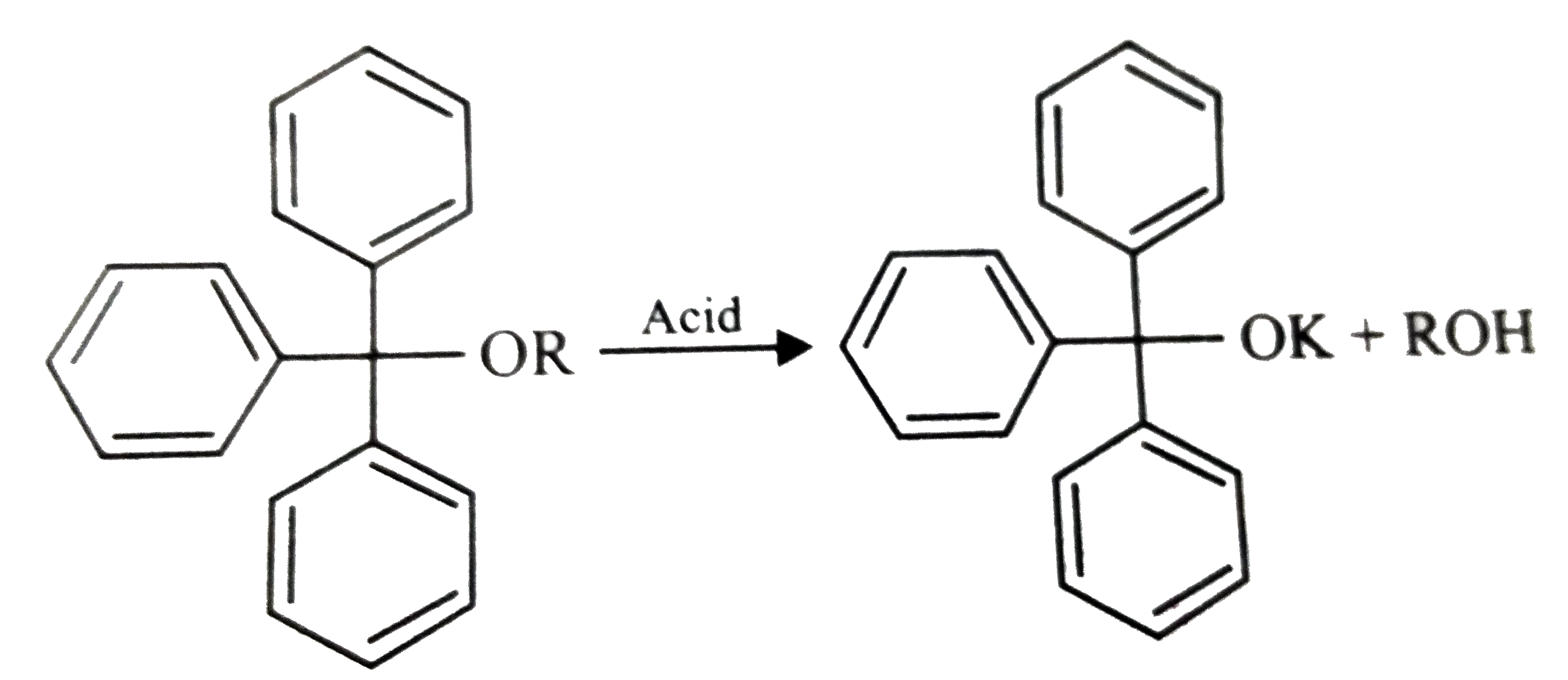 View Solution
View SolutionWhen `H_(2)C=CH-O-CH_(2)CH_(3)` reacts with one molre of HI, one of the product formed is `,`
03:34View Solutiontert-Butyl methyl ether on heating with HI gives a mixture of
02:09View SolutionIn the following reaction
`C_(2)H_(5)OC_(2)H_(5)+4Hoverset(Red P+HI)(rarr)2X+H_(2)O` `X` is01:20View SolutionIn the reaction:
`CH_(3)-overset(CH_(3))overset(|)(C)H-CH_(2)-O-CH_(2)-CH_(3)+HI`
Which of the following compounds will be formed?01:17View SolutionIn the reaction
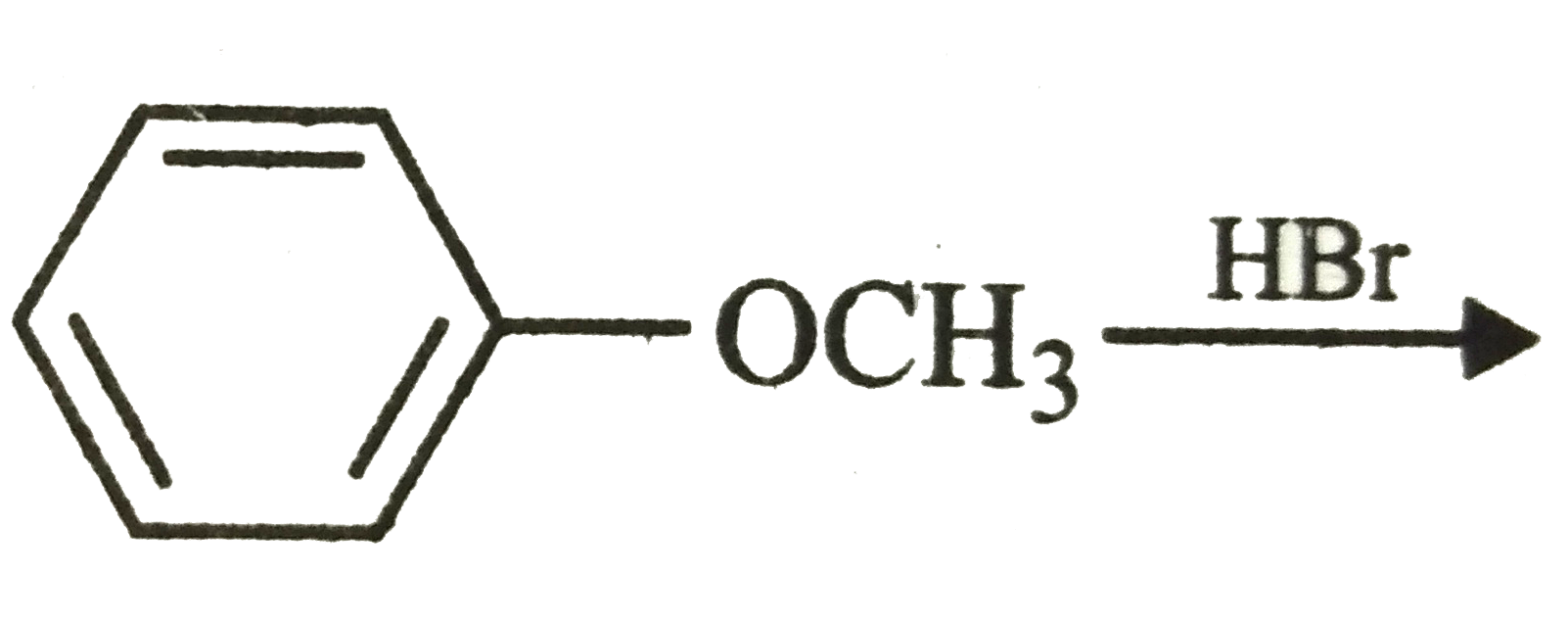 the products are01:36View Solution
the products are01:36View SolutionWhat are the products of the following reactions `?`
`C_(6)H_(5)OCH_(2)CH_(2)OH underset("Heat")overset("Excess HBr")(rarr)`04:13View SolutionWhich of the following compounds is resistant to nucleophilic attack by hydroxyl ions?
01:51View Solution
A is01:16View SolutionAnisol `overset((CH_(3))_(3)C Cl)underset(AlCl_(3))(rarr)overset(Cl_(2)//FeCl_(3))(rarr)overset(HBr)underset(heat)(rarr)X`
The product `X` in the above series of reacitons is03:08View Solution
COMPETITION FOCUS JEE (MAIN AND ADVANCED)/MEDICAL ENTRANCES SPECIAL (MULTIPLE CHOICE QUESTIONS WITH ONE CORRECT ANSWER-I) questions and complete solutions for chapter ALCOHOLS, PHENOLS AND ETHERS of PRADEEP CHEMISTRY (HINGLISH) of Class 12
All Exercises from PRADEEP Class 12 CHEMISTRY ALCOHOLS, PHENOLS AND ETHERS
- ADDITIONAL QUESTIONS (LONG ANSWER QUESTIONS)
- ADDITIONAL QUESTIONS (SHORT ANSWER QUESTIONS)
- ADDITIONAL QUESTIONS (VERY SHORT ANSWER QUESTIONS)
- COMPETITION FOCUS JEE (MAIN AND ADVANCED)/MEDICAL ENTRANCES SPECIAL (ASSERTION-REASON TYPE QUESTIONS-VII) Type-I
- COMPETITION FOCUS JEE (MAIN AND ADVANCED)/MEDICAL ENTRANCES SPECIAL (ASSERTION-REASON TYPE QUESTIONS-VII) Type-II
- COMPETITION FOCUS JEE (MAIN AND ADVANCED)/MEDICAL ENTRANCES SPECIAL (INTEGER TYPE QUESTIONS-VI)
- COMPETITION FOCUS JEE (MAIN AND ADVANCED)/MEDICAL ENTRANCES SPECIAL (MATCHING TYPE QUESTIONS-IV)
- COMPETITION FOCUS JEE (MAIN AND ADVANCED)/MEDICAL ENTRANCES SPECIAL (MATRIX-MATCH TYPE QUESTIONS-V)
- COMPETITION FOCUS JEE (MAIN AND ADVANCED)/MEDICAL ENTRANCES SPECIAL (MULTIPLE CHOICE QUESTIONS -III) Comprehension
- COMPETITION FOCUS JEE (MAIN AND ADVANCED)/MEDICAL ENTRANCES SPECIAL (MULTIPLE CHOICE QUESTIONS WITH ONE CORRECT ANSWER-I)
- COMPETITION FOCUS JEE (MAIN AND ADVANCED)/MEDICAL ENTRANCES SPECIAL (MULTIPLE CHOICE QUESTIONS WITH ONE CORRECT ANSWER-II)
- CONCEPTUAL QUESTIONS
- CURIOSITY QUESTIONS
- HIGHER ORDER THINKING SKILLS (HOTS PROBLEMS)
- HIGHER ORDER THINKING SKILLS (QUESTIONS AND PROBLEMS WITH ANSWERS/SOLUTION)
- IMPORTANT QUESTIONS FOR BOARD EXAMINATIONS.
- NCERT EXEMPLAR PROBLEMS WITH ANSWERS, HINTS AND SOLUTION (ASSERTION AND REASON TYPE QUESTIONS)
- NCERT EXEMPLAR PROBLEMS WITH ANSWERS, HINTS AND SOLUTION (LONG ANSWER QUESTIONS)
- NCERT EXEMPLAR PROBLEMS WITH ANSWERS, HINTS AND SOLUTION (MATCHING TYPE QUESTIONS)
- NCERT EXEMPLAR PROBLEMS WITH ANSWERS, HINTS AND SOLUTION (MULTIPLE CHOICE QUESTIONS-I)
- NCERT EXEMPLAR PROBLEMS WITH ANSWERS, HINTS AND SOLUTION (MULTIPLE CHOICE QUESTIONS-II)
- NCERT EXEMPLAR PROBLEMS WITH ANSWERS, HINTS AND SOLUTION (SHORT ANSWER QUESTIONS)
- NCERT QUESTIONS AND EXERCISES WITH ANSWERS (NCERT EXERCISES)
- NCERT QUESTIONS AND EXERCISES WITH ANSWERS (NCERT INTEXT SOLVED QUESTIONS)
- NCERT QUESTIONS AND EXERCISES WITH ANSWERS (NCERT INTEXT UNSOLVED QUESTIONS)
- TEST YOUR GRIP (I. MULTIPLE CHOICE QUESTIONS)
- TEST YOUR GRIP (II. FILL IN THE BLANKS)
- VALUE BASED QUESTIONS WITH ANSWERS
